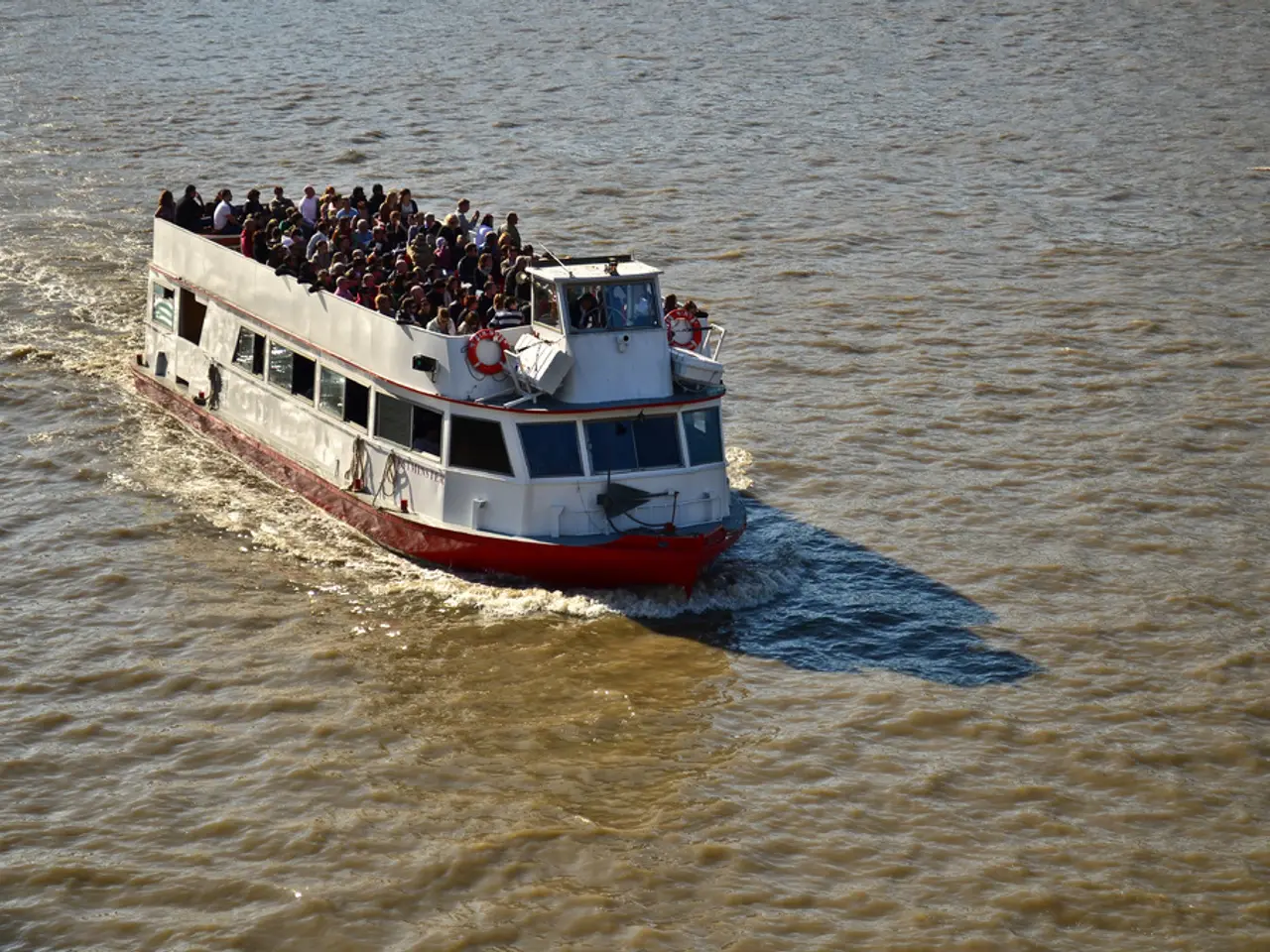Overcrowding in Tourist Destinations: The Point Where Visitors Cease to be Desired
Europe is grappling with the challenges posed by overtourism, as an increasing number of visitors flock to popular destinations each year. To address these issues, various strategies are being implemented to promote sustainable development, regulate tourism, and redistribute visitors across the continent.
In Italy, the cities of Venice and the Dolomites are facing overcrowding, with 75% of tourists concentrating on just 4% of the area [6]. Some landowners in the Dolomites have initiated a toll for access to certain viewpoints, such as Seceda, to combat issues like litter, stressed livestock, and trampled alpine pastures [1]. Similarly, Venice made over five million euros in entrance fees from day-trippers in 2025, but the city still faces problems like overcrowded alleys, irritated residents, and a fading everyday life [2].
Greece, too, is dealing with the impact of mass tourism, particularly in Mykonos, where the price development has become so high that few Greeks can afford a holiday there [3]. In response, the government has implemented an entrance fee of 20 euros for cruise tourists in super-destinations like Santorini and Mykonos [4]. Authorities are also monitoring and penalizing violations more strictly to ensure that at least half of the beach area remains accessible to everyone [5].
Spain is heading towards a new tourist record by 2025, with the number of foreign visitors potentially exceeding 100 million for the first time this year [7]. To manage this influx, measures include significantly increasing the tourist tax, up to 15 euros per night in Barcelona [8], and phasing out holiday rentals completely by the end of 2028 [9].
In Scandinavia, tourist hotspots like Copenhagen and Norway's fjords are being overwhelmed by visitors due to the trend towards "coolidays" - vacations in cooler regions instead of overheated southern Europe [1]. To address this, destinations are implementing rules, apps, and a GPS system to manage visitor numbers and protect local communities [10].
Austria's Hallstatt counts over a million visitors annually, many from Asia, attracted by the picturesque backdrop that has become famous through TV series [1]. In response, Mayor Alexander Scheutz proposes limiting access to the federal road to control the influx of tourists [11].
Europe is also investing in sustainable infrastructure and transportation to reduce the carbon footprint and crowding in major cities. France has banned certain domestic flights that can be served by train within 2.5 hours, boosting rail travel and encouraging visits to less-visited regions [2]. Through the EU Cohesion Policy and Interreg programs, over €2 billion has been invested in promoting sustainable tourism, environmental stewardship, and social cohesion across Mediterranean countries [3].
Authorities aim to improve the quality and ecological footprint of tourism by encouraging meaningful experiences that value social inclusion, biodiversity, and local culture, thus moving beyond mass tourism models [2]. Destinations also promote off-the-beaten-track experiences and shoulder-season travel to reduce pressure on hotspots like Mallorca, Paris, Rome, and popular Mediterranean cities [4].
These strategies are part of a broader effort to balance economic benefits from tourism with the preservation of residents’ quality of life, environmental protection, and cultural heritage preservation in Europe's most affected regions [1][2][3][4][5].
References:
- The Guardian
- Euronews
- EU Cohesion Policy
- The Local
- Greek Reporter
- The Telegraph
- The Independent
- The Local
- The Local
- The Local
- The Local
In response to the increasing tourism in Copenhagen, authorities are implementing rules, apps, and a GPS system to manage visitor numbers and protect local communities, following the trend of "coolidays." (rules, Copenhagen, GPS system)
To combat overcrowding in Austria's Hallstatt, Mayor Alexander Scheutz proposes limiting access to the federal road as a means to control the influx of tourists, similar to Italy's toll system on Seceda. (Hallstatt, limit access, Seceda)






